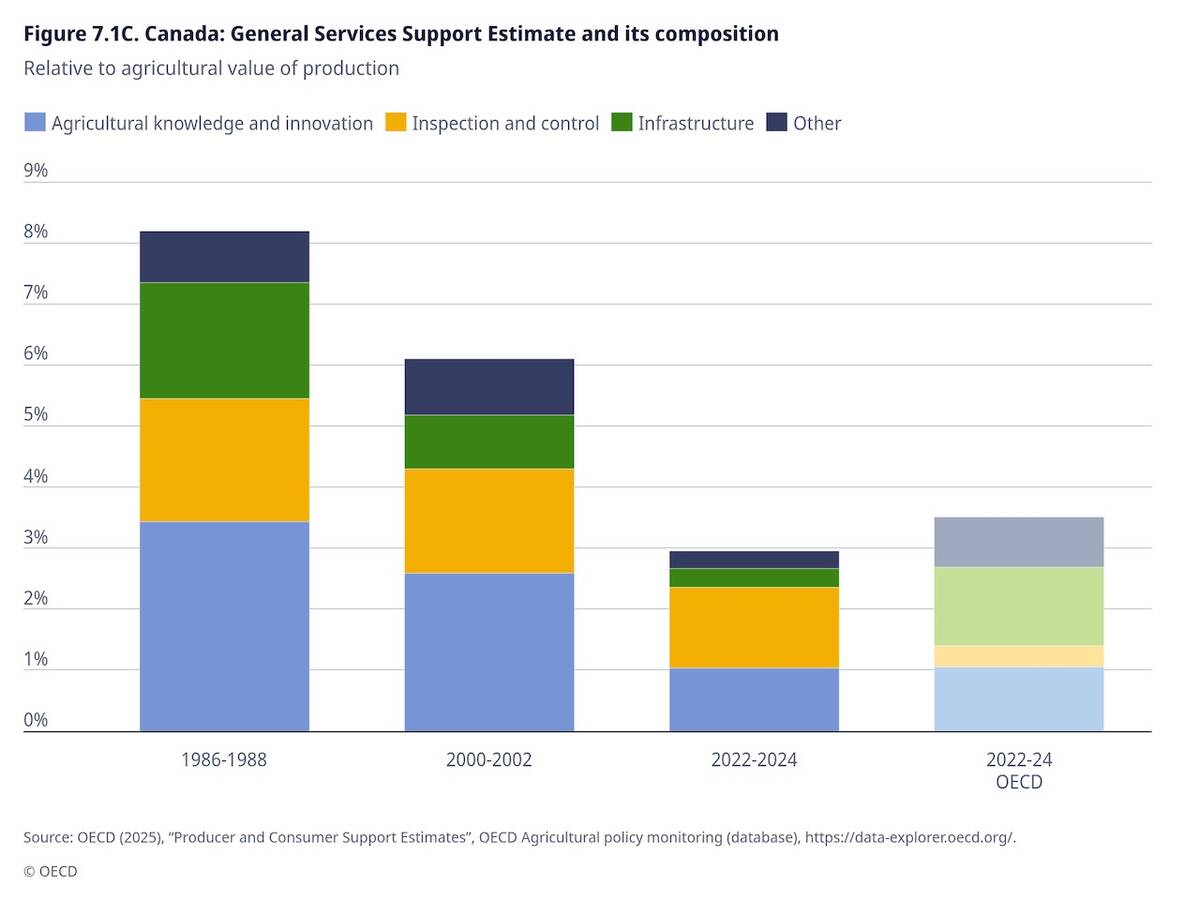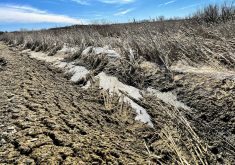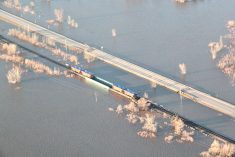Most rivers across the province are still sitting at low to moderate risk of flooding, according to the most recent update from the Manitoba Transportation and Infrastructure’s Hydrologic Forecast Centre, released March 25.
Actual melt conditions are going to depend on weather over the next few weeks, however, the province warned.
Currently, the Hydrologic Forecast Centre expects most lakes to stay inside desired operating levels following the spring runoff.
Read Also

OECD lauds Canada’s low farm subsidies, except supply management
The Organization for Economic Co-operation and Development says Canada’s farm subsidies are among the lowest, but still criticized supply management industries like dairy, poultry and eggs.
Parts of western Manitoba and the Interlake, meanwhile, are on slightly higher alert.
The Assiniboine River is currently rated as a moderate flood risk along its main stem from Russell to Brandon, as is the Souris River, Qu’Appelle River, and the Interlake region in general, including the Fisher and Icelandic Rivers.
The Red River, Pembina River, Rat River, Roseau River, Winnipeg River, Saskatchewan River, Churchill River, Carrot River, Swan River and the Whiteshell Lakes areas had a low/minor flood risk as of March 25.
The centre also clarified that its forecast includes potential impacts from a storm system sweeping down on Manitoba heading into the weekend.
That system is expected to bring up to 15 centimetres of snow, mainly concentrated to basins in southern and central Manitoba.
The Red River Floodway and the Portage Diversion may need to be operated minimally to address upcoming weather conditions. Flows are being managed at the Shellmouth Dam “to provide storage capacity for reservoir inflows to reduce flooding downstream as well as ensure a sufficient reservoir level for recreation and water supply,” the province said.
Ice breaking is done on the Red and Icelandic rivers and will continue this week for the Fisher River.
The province also warned people away from venturing out on the ice of any rivers, ponds, lakes or other water bodies. Ice is getting progressively thinner and weaker with warming temperatures, the March 25 release said.
















